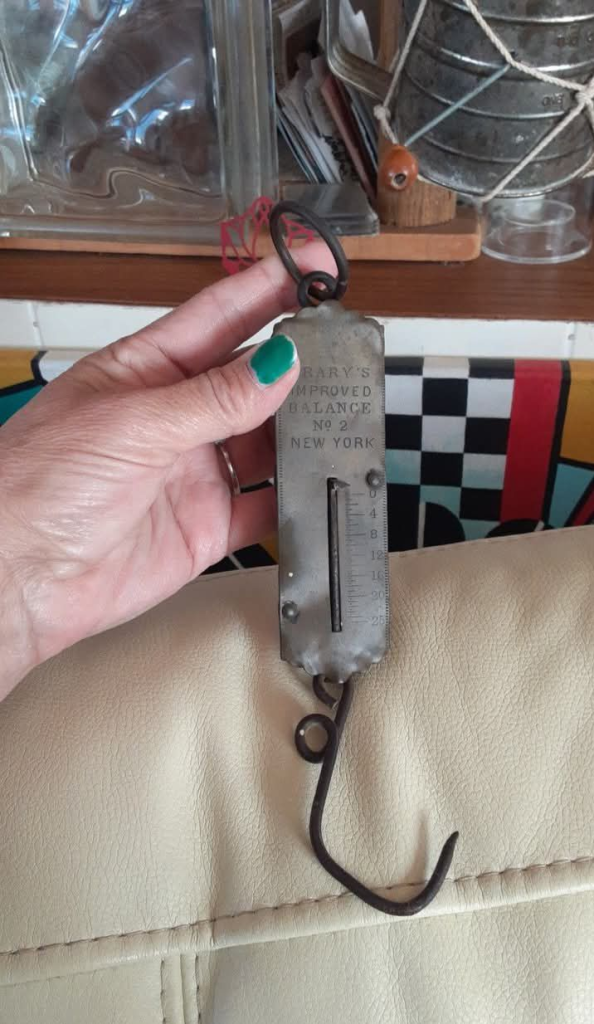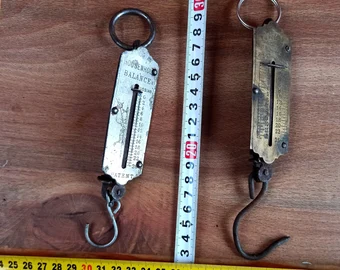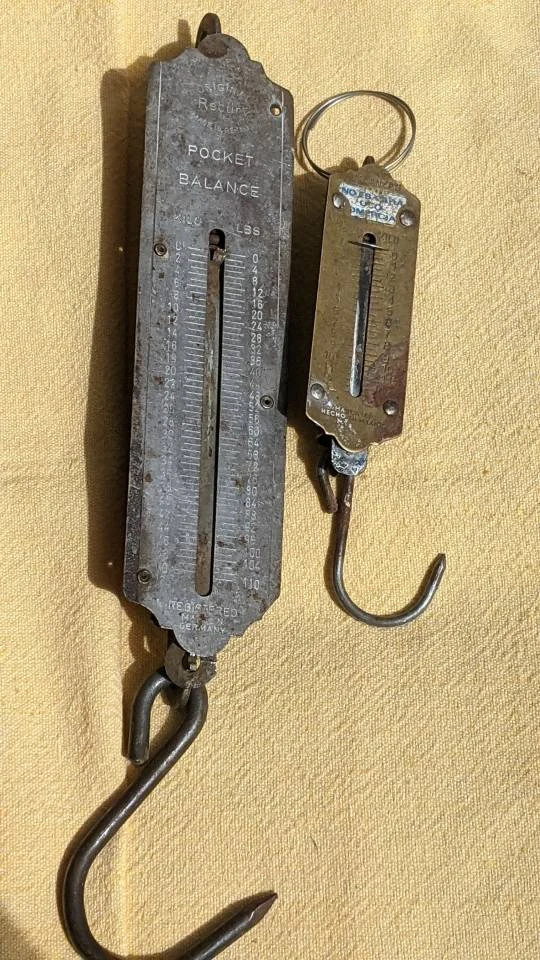Ever picked up something and instantly felt its story in your hands? That’s the experience of encountering a vintage spring balance scale. More than just an old measuring tool, it’s a relic of everyday life from a bygone era—a true piece of functional history.
Commonly known as a hanging scale or spring balance, this compact device once played a vital role in farms, small-town shops, and bustling open-air markets. The particular model we’re talking about—stamped with either “Chatillon’s Improved Spring Balance No. 2, New York” or “Marry’s Improved Balance No. 2, New York”—is a timeless classic.
With its weathered metal frame, sturdy hook, and deeply engraved markings, this scale likely dates back to the late 1800s or early 1900s. But its value goes far beyond function. It doesn’t just measure weight—it holds the weight of an era, quietly echoing the hands that once relied on it every day.

How It Works: Simple Mechanics, Ingenious Design
At first glance, the vintage spring balance looks almost too simple to be clever—a metal frame, a ring at the top for hanging, a hook at the bottom for holding weight, and a scale etched down the center. But don’t let its minimalist design fool you. Inside, it’s a small marvel of mechanical engineering.
The magic lies in a tension spring hidden within the body. When weight is applied to the hook—whether it’s a freshly caught fish, a sack of grain, or produce from a market—the spring stretches downward. That subtle movement shifts the internal mechanism, sliding the scale to reveal the weight with surprising precision.
No batteries. No wires. No digital fuss. Just physics in action—a pure, mechanical muscle that responds to pressure and tells the truth every time.
Video: Restoration of old measuring scales – Spring scales
The Original Purpose: Measuring What Mattered Most
Long before digital displays and precision sensors, people still needed to measure—and this humble spring balance made it possible. Farmers relied on it to weigh their harvest. Fishermen used it to measure their catch fresh from the water. Hunters checked their game, and local shopkeepers used it to price goods on the spot.
Compact and durable, it was the original all-purpose scale—small enough to carry, tough enough to handle the elements, and accurate enough to trust. Whether out in the fields, at the market stall, or down by the docks, it turned any place into a working marketplace within seconds.
More than a tool, it was a trusted companion—quietly keeping commerce moving and livelihoods afloat.
Design Details: Rugged, Reliable, and Unapologetically Retro

Let’s Talk Looks: Aged to Perfection
There’s a quiet dignity in the design of a vintage spring balance scale. The metal casing, worn smooth by years of handling, carries the kind of patina you just can’t fake. Depending on the model, the scale typically tops out at 25 or 50 pounds, with clearly etched increments running down its face. The sturdy bottom hook was made to hold real weight—grain sacks, fish, tools—while the top loop could be hung from a nail, a beam, or even gripped by hand.
It’s a no-nonsense design—form serving function—but there’s a rugged industrial charm that gives it character. For collectors, that’s part of the magic.
If you spot markings like “No. 2, New York”, you may be holding a piece made by John Chatillon & Sons, one of America’s most respected scale manufacturers of the era. These weren’t just built to measure—they were built to endure.
Collectors, Take Note: More Than Just a Tool
Today, these spring balances have traded their utilitarian past for a place in curated collections and vintage decor. They appeal to antique lovers, industrial design fans, and those who cherish Americana with a story.
You might find them in vintage markets, barn sales, or proudly displayed in someone’s home office or workshop. And while they’re no longer needed for weighing produce or fish, they’ve taken on a new kind of value—sentimental, aesthetic, and historical.
Each one carries its own mystery. Was it used in a general store in Ohio? On a boat off the Florida coast? Or maybe it was passed down through generations on a Midwest farm. That unknown history only deepens the allure.
Prices for these vintage scales range from $30 to over $150, depending on condition, markings, and rarity. The better preserved the piece—especially with legible engravings and minimal rust—the more desirable it becomes.
Why It Still Captivates Us Today

Let’s Be Honest: A Raw, Refreshing Relic in a Digital Age
In a world driven by swipes, taps, and instant everything, there’s something profoundly satisfying about a tool that just works. No charging cables. No software updates. No confusing manuals. Just a piece of metal and a tightly wound spring, quietly doing what it was designed to do—year after year.
But this scale is more than a device. It’s a time traveler. Every scratch on its surface, every weathered number etched into its frame, whispers a story from another era. It’s a reminder of a time when precision came not from programming, but from pure, hands-on craftsmanship. When tools weren’t designed to be replaced—they were designed to last.
How to Care for Your Vintage Spring Balance
Scored one of these mechanical gems? Here’s how to keep it looking great and functioning well:
-
Keep it dry – These old-school metals don’t play well with moisture. Store your scale in a cool, dry place to prevent rust.
-
Gentle cleaning only – Use a soft, dry cloth to wipe it down. Avoid harsh scrubbing—preserving the original patina is part of the charm.
-
Display it with pride – Whether it’s in a rustic kitchen, a vintage-themed office, or on a collector’s shelf, this piece deserves to be seen and appreciated.

How to Care for Your Vintage Spring Balance
Scored one of these mechanical marvels? Great choice. To keep your vintage spring balance looking sharp and aging gracefully, follow these simple care tips:
-
Keep it dry – These classic tools weren’t made to fight off rust. Moisture is the enemy. Store it in a cool, dry place—preferably away from damp basements or humid kitchens.
-
Go gentle on cleaning – Skip the abrasive scrub. Use a soft, dry cloth to wipe away dust and grime. You’re not trying to make it look new—you’re preserving its character and that beautiful, time-earned patina.
-
Show it off – This isn’t just a tool; it’s a conversation piece. Whether hung on a wall, perched on a shelf, or styled into a vintage display, your spring balance deserves to be admired.